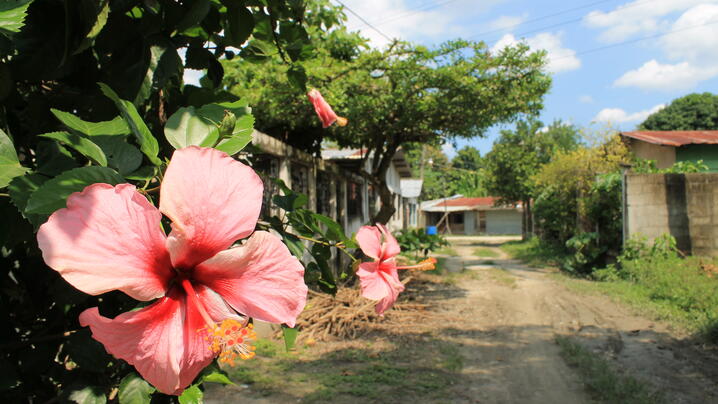
As our trip began to wind down, we traveled to Choloma on our last day for another formal MOU signing with Mayor Leopoldo Crivelli Durant. This agreement acknowledges that CityLinks will collaborate with Choloma to enhance the participation, level of commitment, and leadership of their Municipal Crime Prevention Committee, assist with community infrastructure projects, and train city officials using the CPTED methodology. Once again, we had a full room of members from the Crime Prevention Committee, reporters eager to interview the mayor and Joe, city officials, and other residents.
Mayor Crivelli told me that in the past twenty years, the population in Choloma has grown from 35,000 inhabitants to over 400,000. Many people moved to Choloma to find employment, but there were not enough jobs to go around. The desperation and unemployment rates are two factors that drive the violence in this municipality. In 2011, there were 275 homicides, and most occurred on weekend nights in public spaces. Residents are too afraid to meander downtown at night now, but the mayor hopes his staff's dedication to crime prevention efforts will produce some successful results that will reduce crime and the level of fear in Choloma.
Later that day, we drove into Japón and Rubí, the two neighborhoods selected for the Honduras Pilot Partnership. As we entered the communities with members from the Crime Prevention Committee, we were instructed to roll down our car windows so that we wouldn’t appear as threats to the community.
On our previous visits to Armenia Bonito and Bonitillo in La Ceiba, I didn’t notice much of a gang presence, but this wasn’t the case in Choloma. We saw graffiti sprayed on walls followed by the number 18, which represents the 18th Street Gang, one that originated in Los Angeles, CA. It is common for at-risk youth who don’t have the opportunity to further their education and are searching for a place to belong, to become involved in gangs. Gangs can provide a sense of community, social support, protection, power, and status to these young people that often come from poor, broken homes.

Graffiti in Japón.
These neighborhoods were similar to the ones we saw in La Ceiba with dirt roads and limited street lights, but Rubí was dangerously located near a river. You can imagine how much trouble this causes for residents when the river overflows after a heavy rainstorm. We haven’t made any final decisions about the projects we will implement for Japón and Rubí, but building more street lights, paving the roads, and installing water drainage systems are some of the priorities.
New, Reduced Membership Dues
A new, reduced dues rate is available for CAOs/ACAOs, along with additional discounts for those in smaller communities, has been implemented. Learn more and be sure to join or renew today!
